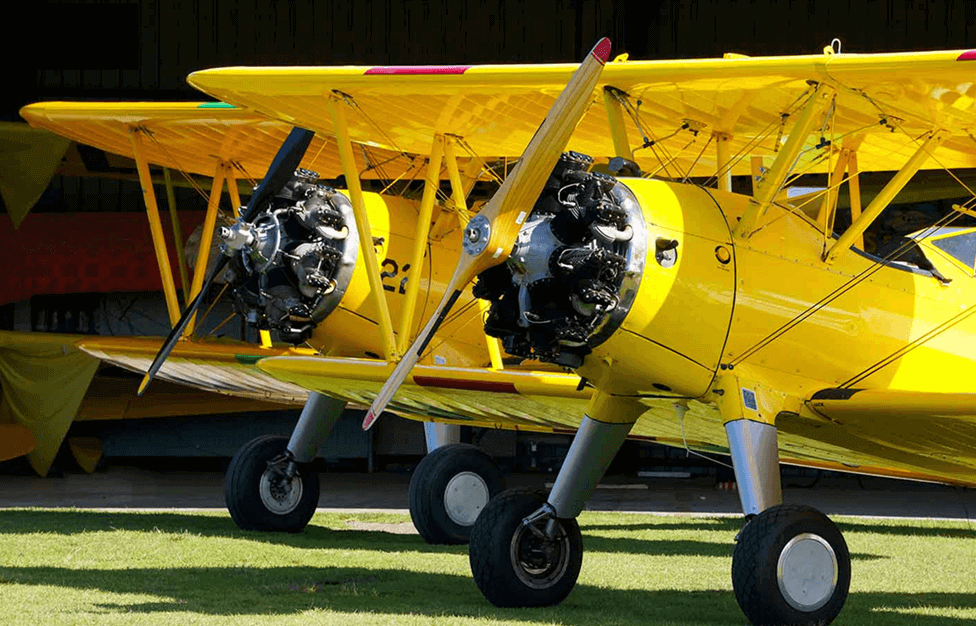It’s A Complete System!
When you cover your airplane with Poly-Fiber, you get everything you need. All the tools and materials, all from your Poly-Fiber distributor.
SHOP FOR PRODUCTS
Product Manuals!
Over 150 pages of step-by-step instruction, helpful photos, and extra words of wisdom. And we’ve included our entire catalog of products, everything from fabrics to stirring paddles. Available on our Secure Online Order site!
Product Support!
If you have questions we have the answers, please feel free to contact us.
Or call Jeff at 817-279-8045.
“Why should I use Poly-Fiber?”
- Poly-Fiber is the only all-VINYL system on the market today. As it dries, it bonds extremely well to today’s polyester fabrics and remains flexible.
- Poly-Fiber does not support combustion.
- Poly-Fiber is one of the lightest systems available. Only eight coats are used. There are lightweight options, too.
- Poly-Fiber is the most repairable of all systems available today, and the repairs are as strong as the original.
- Poly-Fiber can be rejuvenated after years of weathering.
- It has over 50 years of success as the Stits Poly-Fiber system. Many original jobs done 30 years ago are still going strong.
- Poly-Fiber is not particularly sensitive to heat, cold, or humidity during application or throughout its service life.
- Poly-Fiber offers choices in fabric weights and types of top coat paints. There are 50 top coat colors in Poly-Tone and Aero-Thane.
- Poly-Fiber has options for every aircraft from a simple ultralight to the most sophisticated warbird.
“What will it cost to cover my airplane?”
- Cub-size airplanes usually run about $4,00 to $5000.
- A Stearman will run about $5,000.
- An ultralight may cost as little as $1,000 to $1,700.
“Is Poly-Fiber more expensive than other systems?”
No, they all cost about the same! Although dope costs less per can than Poly-Fiber, you use twice as much dope as Poly-Fiber. Price them out for yourself. You’ll find they pretty much even out.
“How many steps are there?”
Only six basic steps:
-
- Glue on the fabric with our Poly-Tak fabric cement; tighten it with the heat of a calibrated clothing iron.
- Brush on a coat of Poly-Brush fabric sealer.
- Riblace, then apply gussets and finishing tapes with more Poly-Brush.
- Spray on two more coats of Poly-Brush.
- Spray on three cross coats of silver Poly-Spray to block ultraviolet radiation.
- Spray on two coats of top coat paint, either Poly-Tone or Aero-Thane.
“That’s eight coats. How much does that weigh?”
It weighs surprising little. Being a solvent based product a Cub will only gain about 40-45 pounds, not the usual 75 from catalyzed paints. Smaller aircraft and ultralights average about 20 to 25 pounds. For extreme ultralights it’s possible to eliminate the Poly Spray and get down to 12 to 15 pounds, but this covering won’t have all the capabilities of the full eight-coat system such as the UV protection.
“Can I use automotive paint over a Poly-Fiber base?”
Revision 21, September 2006, of the Poly-Fiber Procedure Manual No. 1 STC SA 1008WE allows only Poly-Tone or Aero-Thane or Ranthane (Ranthane now approved 2006!) topcoat paint over the fabric-covered components of certified aircraft. This is a major change to the STC. Use of any other topcoat paint over fabric will void the STC. The old rule that the STC was valid only “up to the silver” and that any available topcoat paint could be used has changed. The increasing use of brittle automotive polyurethane paints over the years has caused enough cracking and delamination to cause the FAA to rethink approving untested topcoat paint over fabric. Failed topcoat paints expose polyester fabric to sunlight and UV damage. Poly-Tone, Aero-Thane and Ranthane have long service records over fabric as well as established test data on file with the FAA. Additionally, both paints have an FAA Parts Manufacturing Authority (PMA) which allows their application on certified aircraft. This has no effect on the non-fabric components. For instance, a J-3 Cub must have only Poly-Tone or Aero-Thane over the fabric parts, but you could use enamel or anything else over the metal struts, cowls, doors, etc. The key word is FABRIC. Experimental aircraft are not bound by these changes; however, we do recommend using products with a known track record with proven procedures on fabric.
Our primary goal is to provide you with the products you need to cover your airplane PLUS the clear concise instruction you need to use those products to complete the job.
